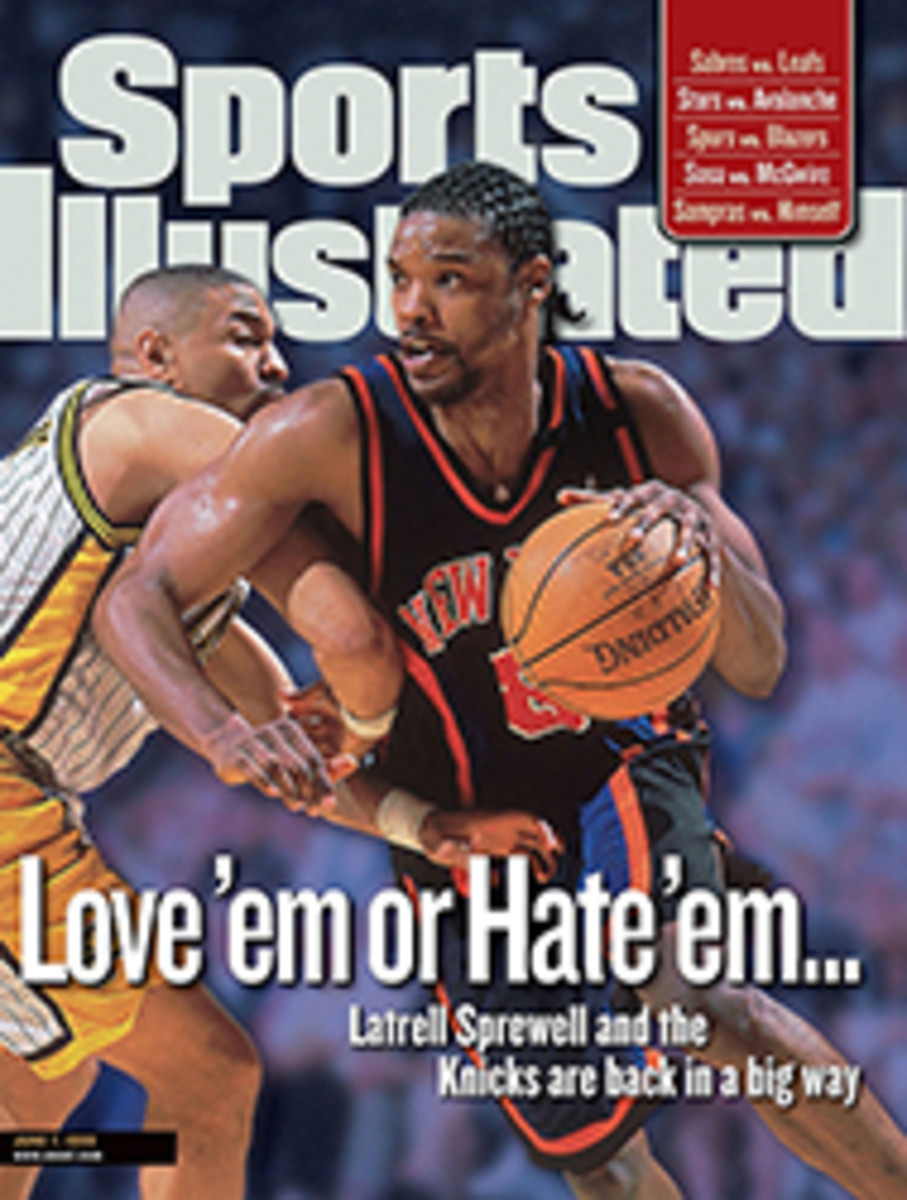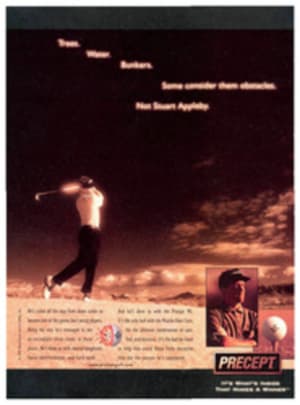
Our Favorite Venues Certain ground rules prevail when it comes to picking the best places in the world to watch sports: no domes, no condemned buildings, no Hooters
Where were you when Mark McGwire hit his 62nd home run? On the
couch, probably, enjoying your coast-to-coast privileges, all for
the price of basic cable. None of the inconveniences of space and
time for you. You're in every gallery, every stadium, every field
house. You're everywhere, on your couch.
That's a pretty good deal, and few would trade the advantages of
virtual attendance for the nostalgia of actual occupancy (one
word: parking). Still, there's something about the crispness of
a Dodger Dog, the soft rumble of surf beyond the grandstand at
Del Mar, the flash of gold nugget jewelry in the parking lot
behind Caesars Palace that television can't digitize. There's
something about being there.
And where exactly would you be if you weren't on your couch?
Where would you go to register the click of the turnstile, the
feel of wooden slats beneath you, the whiff of stale beer?
Wrigley, Wembley, Williamsport. Odd little cathedrals with
strange rituals and sacraments (Dodger Dogs!). You'd be
someplace that was engineered for sensory overload, not skybox
revenue, the smell of peanuts on a summer breeze mingling with
the roar of V-8s. You'd be someplace varnished in layers of
history, the satiny armrest reminding you that somebody else sat
here and saw Babe Ruth hit his 60th. You might be in some
abomination of architecture, but you'd be someplace.
So here's where we'd be if we could just take in a game some
afternoon. We'd be in one of these places, hunched in a
time-polished bleacher, humoring the ghosts in the outfield,
trying to remember where the hell we parked. Eating a Dodger
Dog, probably.
Years later, when pressed to explain the unique drama of that
afternoon--just smells and sights and sounds, really--we'd say,
You had to be there.
1 Yankee Stadium
No sports arena in history, with the possible exception of the
Roman Colosseum, has played host to a wider variety of memorable
events. Two popes prayed here, Johnny Unitas threw here, Jim
Brown ran here, Joe Louis fought here, and Babe Ruth, Lou Gehrig
and Joe DiMaggio played here. Ground can't get more hallowed
than that.
2 Augusta National
Is it the $1.50 ham sandwiches or the peach cobbler? The Crow's
Nest or the Champions Room? The pushover par-5s or the murderous
par-3s? The soccer-field fairways or the M.C. Escher greens? Is
it because there are no pro-ams, no billboards, no blimps? Is it
because being inside the ropes actually means something? Is it
because every complete player has painted on this same rolling
canvas, or because no player is complete until he has?
3 Michie Stadium
Game day at West Point begins three hours before kickoff with the
cadet parade on The Plain. It's a scene straight from The Long
Gray Line, surpassed only by the view of the Hudson River from
the west stands at Michie Stadium. The Corps of Cadets, seated
together and dressed in gray and black, evokes memories of when
Army was one of the most formidable of college football powers,
and cannon blasts shake the 76-year-old edifice to its foundation
every time the Black Knights score. It doesn't matter in the
least that national championships are no longer decided here.
4 Cameron Indoor Stadium
The undergraduates who pack Duke's antiquated Cameron Indoor
Stadium--those wiseacres with the 1,400 SAT scores--are as
entertaining as the games. (Pity the visiting player who has been
in the news for some malfeasance.) No wonder the Blue Devils are
133-17 at home over the last 10 years. It's easy to win when
you're playing six-on-five.
5 Bislett Stadium
An oval of crumbling mortar and rotted wood in a residential
neighborhood not far from the center of Oslo, Bislett Stadium
transforms itself each summer into a cauldron of desperate noise
and rhythmic clapping that carries runners on invisible wings.
Sixty-one world records have been set on its forgiving,
brick-colored track; Lynn Jennings, the 10,000-meters bronze
medalist in the 1992 Olympics, once called it a distance runner's
Fenway Park. Bislett is scheduled to be torn down and replaced by
a new stadium. Replaced but not improved upon.
6 Wrigley Field
It's impossible to feel blue at Wrigley Field, even though your
beloved Cubs are losing again. The place has grown a bit larger
and, amazingly enough, even more graceful since it was built in
seven weeks in 1914 for $250,000. It's a national treasure, a
true American original. It's ivy and brick and bleachers and a
manual scoreboard and seats so close to the field you can almost
hear the infield chatter of Hornsby, Hartnett and Banks.
7 Roland Garros
If you like tennis, the French Open is the best sports event in
the world to attend. If you don't like tennis, it's still the
best sports event in the world to attend because it's in Paris.
In the spring Roland Garros is more at ease with itself than
Wimbledon, which is so self-conscious. Wimbledon is in a distant
suburb of London; Roland Garros is at the edge of the Bois de
Boulogne. And Roland Garros may be the only friendly place in
Paris.
8 Lambeau Field
In Green Bay, where the local time is always 1963, the citizens
worship their Packers with religious fervor, and Lambeau Field is
their ageless cathedral. The benches are aluminum, the grass
(when not iced over) is resplendent, and the fans are rabid but
realistic without being rude. No wonder Packers players leap into
the stands after scoring touchdowns. On a truly cold day you can
feel the spirit of Vince Lombardi--even if you can't feel your
toes.
9 Fenway Park
The spiritual blueprint for the dozens of new-old ballparks that
have been built in the past decade, our favorite old-old
ballpark, built in 1912, doggedly survives as developers plot its
demise in the next decade. Babe Ruth pitched here. Ted Williams
hit and spit here. Yaz won a Triple Crown here. Batters aim for
the 37-foot-tall Green Monster in left because in this park,
hitting the wall is always a good thing.
10 Saratoga Race Course
Directions to Saratoga Race Course, by Red Smith: "From New York
City you drive north for about 175 miles, turn left on Union
Avenue and go back 100 years." With its striped awnings, old
wooden clubhouse and grandstand, and paddock shaded by elms,
Saratoga transports you back to the days when people came to the
races in surreys with the fringe on top.
11 Pebble Beach
Robert Louis Stevenson, a Scot but not a golfer, called the curve
of Carmel Bay upon which the Pebble Beach golf course was built
in 1919, "the most felicitous meeting of land and sea in
creation." Other courses are as architecturally brilliant, but
none overwhelms the senses like Pebble Beach--raw nature is on
display here as at no other golf course on earth.
12 Wembley Stadium
The most famous soccer stadium in the world was built in 1923 and
that year hosted the English FA Cup Final, the so-called White
Horse Final, at which 200,000 peaceable spectators were policed
by a lone constable on a white stallion. Since then countless
pilgrims have entered grounds as charmless as Cleveland's old
Municipal Stadium. No matter: Wembley means big matches, and its
mystique lies in a team's just making it here.
13 The Pit
A mile high but 37 feet underground, the Pit in Albuquerque has
been the site of many mind-blowing college basketball games,
including North Carolina State's upset of Houston in '83 and just
about any New Mexico home game. The noise created by fans, which
has been measured at 125 decibels--the pain threshold for the
human ear is 130--is a palpable force.
14 Boston Marathon Course
For 103 years the hale and hardy and inexplicably optimistic
have gathered in little Hopkinton, Mass., at noon on Patriots'
Day to run the 26.2 miles to downtown Boston. Heartbreak Hill is
actually the last of four hills three quarters of the way
through the journey. That climb completed, runners still have
six miles to travel before they reach the office towers of the
city, where the hale and the hardy will become the lame and the
halt--and victors, all of them.
15 Camden Yards
The best compliment you could give Camden Yards is that it looks
old beyond its years. You can savor the game's past as well as
chardonnay and shrimp from an upholstered chair in a luxury box.
The builders of Camden Yards did retro right--its success kicked
off the biggest building boom in baseball history and brought
about the biggest change in the majors since the DH: It made
stadium revenue more important to teams than a catcher who can
hit.
16 Lamade Stadium
Lamade Stadium in Williamsport, Pa., site of the Little League
World Series, has seating for about 45,000, but exact attendance
figures are hard to come by since there's no admission charge.
For Little Leaguers, it is their ultimate goal, and for all of us
former Little Leaguers, it's a monument to a simpler, nobler idea
of sport--and one of the few places on earth where you can get a
dog and a soda for a buck.
17 Daytona International Speedway
In 1959, when Lee Petty won a photo finish in the inaugural
Daytona 500, drivers were not yet cognizant of the aerodynamic
phenomenon that made that race--and all races on this 2.5-mile
oval--spectacular. It was and is the draft, which has led to many
mad dashes for the checkered flag.
18 Notre Dame Stadium
Touchdown Jesus keeps an eye on one end zone, and Knute Rockne
watches over the rest of the field. Rockne built his dream
stadium and coached here in 1930, its first season, his last.
19 St. Andrews
No bulldozers built the Old Course, where sheep tamped the crabby
sod into shape. Legend says bored 15th-century shepherds knocked
wooden balls around the place, and the cussing and drinking
haven't stopped since. Mary Queen of Scots played here; Old Tom
Morris, the first golf pro, gave lessons here 130 years ago.
20 Rose Bowl
The Rose Bowl is more a postcard than a stadium, designed to
seduce pasty Midwesterners with the California fantasy. How many
Big Ten fans tuned in on those wintry New Year's Days to gawk at
the blooming bougainvillea and started packing their station
wagons at halftime?
MEMORABILIA COURTESY OF KEN BRESLAUER; BARRY HALPER/SOTHEBY'S;
USGA; NATIONAL RACING MUSEUM
COLOR PHOTO MONTAGE: PHOTO MONTAGE BY NOLA LOPEZ
COLOR PHOTO: BRIAN CLEARY DAYTONA SPEEDWAY Souvenir license plate from the 1960s.COLOR PHOTO: NOLA LOPEZ ROLAND GARROS The good red earth that dictates the pace of play at the French Open.
COLOR PHOTO: TOURNAMENT OF ROSES ARCHIVES ROSE BOWL Ribbon commemorating one of Cal's trips to Pasadena.
COLOR PHOTO: NOLA LOPEZ WRIGLEY FIELD Ticket for the 1932 World Series between the Cubs and the Yankees.
COLOR PHOTO: NOLA LOPEZ SARATOGAAccess badge for admission to the clubhouse for a day at the races.
COLOR PHOTO: DAVID N. BERKWITZ LAMADE STADIUM Trading pin from the 1991 Little League World Series.
COLOR PHOTO: NANCIE BATTAGLIA AUGUSTA NATIONAL Souvenir golf ball from the 1999 Masters.
COLOR PHOTO: PAUL BERESWILL
COLOR PHOTO: BOB DUNNAN
COLOR PHOTO: RONALD C. MODRA
COLOR PHOTO: JOHN IACONO
COLOR PHOTO: LANE STEWART

